Arudha and Its Evaluation by UK. Jha, India
Article by U.K. Jha, India
Arudha or Pada of a house is one of the most unique system of prediction dealt in Jaimini Upadesha Sutra (JUS) but is scarcely used by modern scholars of Vaidik astrology. Apart from JUS the description of Arudha is also found in several other classical texts of astrology. However, owing to inexplicable reasons its use in prognostication could not be popular among the savants. Main reason for this; to my own perception, is the controversy associated with evaluation of Pad of a house; especially when the lord is located in angular position from its house. Because of the choking confusions and lack of unanimity in opinion among the scholars this has remained as an abandoned tool of prediction like many other predictive tools described in JUS. From the details available in C S Patel’s book titled “Arudha System of Prediction” wherein he has profusely quoted verses from Bhrigu and other Nadi texts it appears that this system, for sure, was vastly in vogue in the far distant past.
I have been applying Pad principles quite often and have also used it freely in interpretation of charts in my recent book “Mandook Dasa of Jaimini” which was earlier published in essay form in this magazine. Subsequent to that essay many of my astrologer friends constantly pressed upon me to elaborate how I fix the Pad of a house. This article is directed to address all such queries in logical ways. But before embarking upon an absorbing discussion on Arudha and its principles of evaluation I would opt to have a small digression from the main topic because the philosophy behind Pad principles has in general not been properly understood by most of the conventional or research oriented scholars so far. Many have invariably misunderstood the imports of the pertinent sutras of Jaimini (JUS) and they calculate the Pad of the houses wrongly. Suffering from their own cardialgia, few scholars go to the extent of blaming the Acharyas of Varanasi for including the special rules for Pad evaluation in their works and have advised others to discard them. Obviously they have not tried to go through Jaimini sutras with a deep mindful reading and have utterly failed to perceive the pristine principles operating behind Pad system of prediction.
A researcher cannot afford to be sempster because he has to move in quest of sempiternal truths. Research is caused by those unborn power within us which is aroused to build a reality from some structured dream erected in the valley of cloud like thoughts. It is like measuring the breadth and depth of some viewless vast. The outcome that we gain or see is hardly more than any death bound littleness; for, the whole process remains loaded with some ineffable uncertainty till the end and a mystic enthusiasm drives us to the desired Eldorados. For example, Jaimini’s Chara Dasa has been in vogue since thousands of years and if we are going to do something very original in this old Dasa system it becomes our bounden duty to first explain to the students why it is called Chara Dasa? Similarly it is essential to understand why it is called Pad or Arudha? In the academic fora one cannot afford to project his triviality as a case of supernality under the cover of verbose loquacity.
If someone twaddles about something in any magazine or journal in the name of original research, wise men take those rubbish babbles as an inconsiderable piece of work and do not deem it fit to respond to such fatuous garrulity. However; this does not give the authors of those putrid and yeasty research papers the license to propagate their beggarly volubility with any swollen head. But the arrogance patronized by lack of proper and comprehensive knowledge often lead us to believe that the absence of a lambasting response also gives guarantee to declare those topics as accepted. We often forget the fact that majority of Samskrit scholars neither know English language nor do they go through those magazines of astrology. And the self accomplished infidels take the sobriety and nicety of Samskrit scholars as a symptom of pusillanimity.
A good research paper has got to be winkled through one point sharp intellect when the darkness of prevalent beliefs begin to strangle the breast of confidence and ill-heard voice of the indwelling spirit sparks the inner mind to tread boldly under the lamp of wisdom for shearing apart the cobweb of confusions with incising logic and rationality. Most of the so called great scholars/researchers of Jaimini astrology have failed to express their own understanding of those capsuled sutras and moved straight way to dissuade others from using them. That is essential before attacking any antediluvian theory. The superabundance of intellection must be displayed in logical manner because the freedom of accepting or rejecting something cannot be taken or granted without the exhibition of rationally acceptable sapience. In the arena of intellectualism none can be allowed to take presumptuous stand. Ignorance is not and cannot be the bliss where knowledge and intelligence alone are to be prized.
Many of the standard classical texts of astrology have described about the Lagna Arudha or Pad of the houses but it is highly unfortunate that the savants of modern era have utterly failed to form a common view on the topic. The ragging confusions have left this system of prediction totally unused and very few who when deal with it falter to determine the correct Pad or Arudha of the house. This has given rise to great deal of controversies which no one seriously tries to remove. Everyone is sticking to his own views and refuses to buzz from there. The things become still more precarious when arguments in the name of illustrious grandfathers or Parampara are advanced.
All this has not only damaged the reputation of Vaidik astrology but has also given opportunity to foreign scholars to comment that Vaidik astrology is a bundle of confusions and Indian astrologers love to live in controversies. Such remarks indirectly imply that we lack proper knowledge and sense of discrimination to evaluate the things in right parlance. Because of the obstinate stand taken by these savants wisdom is here brutally terminated along with the wise. We all are certainly responsible for such eventualities but the onus of bringing this disrepute to Vaidik wisdom certainly lies with those who have jumped into the foreign market masquerading as an expert par-excellent and created this situation through exposition of their own lack of understandings and confusions.
Arudha or Pad of a house has been dealt mainly in Jaimini Upadesh Sutra but its reference can be seen in various classical texts. The description available in BPHS in this context is basically a commentary on what has been given in Jaimini Sutra. There is hardly any difference between BPHS, Vridha Karika and other commentaries on Jaimini as the confusions have existed in as it is where it is condition. The sutras of Jaimini are brief and terse and the commentators have taken the things in their own stride. However, it is quite clear that none has tried to apply logic to remove the shrouding confusions. The propensity of this confusion can be appreciated from the simple fact that few of the modern savants have preferred to do away with the exceptions/special rule given with the general rule for determination of Arudha. One of the version of BPHS has also gone along the same line and that is the basis for these savants. On the contrary few other savants have infused the concept of double lordship for Scorpio and Aquarius signs. That is certainly alien to injunctions of JUS.
The definition of Arudha is simple but confusion is intractable. We shall revert to the same subsequently and before going for the same it is more important to understand the philosophy on which the concept of Pada or Arudha is based upon.
Horoscope is the two dimensional presentation of the globe of Karmic energy signature of the native and this energy is operating through myriads of inter-passing plain within that globe. The seeds for various types of events are dispersed all along the globe and keep on floating from place to place for finding appropriate energy field or soils to settle for fecundation of ordained effects. The sages have devised several methods to trace those energy fields and Pad technique is one of such methods. In all those techniques the vibrations of previous karmas are intelligently followed to ascertain the probability of manifestation of the event and intensity of its effects.
Let us not forget that all houses are capable of delivering all types of effects because they are capable of providing of requisite soil to the ever floating seeds of karma for fecundation. The planets or Karakas work to stir the process of fecundation at ordained time. The seeds are not free to settle anywhere for fecundation but are governed by certain basic parameters and rules. These rules are again based on the grand theory of vibration which is amplified, actuated, subdued and controlled by the house concerned, its lord and karakas etc. The karmic energies keep on hovering inside the space or globe in and around those places where the concentration to stimulate them are high. In the theory of Pad system of tracing the settling points of floating karmic seeds, the lord of the house concerned plays the pivotal role. In other methods the house itself or its significator does that job.
The philosophy here is to accentuate the vibration of a house along the path of its lord. But sometimes it becomes difficult to have the optimum amplification and then some other techniques are applied. That is erroneously understood as exceptions; whereas, they in fact are the special rules when the amplitude of the vibrations of the house is raised to the zenith. We will come to these points latter and first go through the principle of Pad determination.
Let us first see what does the BPHS tells about the Pad of a house.
Kathayamyatha bhawanam khetanam cha Padam dwija
Tadvisheshaphalam Jnatum ythoktam prangamahirshibhih
Lagnad yavatithe rashau tishthetlagneshwarah kramat
Tatastavatithe rashau Lagnasya padamuchyate
Sarveshamapi bhawanam jneyamevam padam dwija
Tanubhawapadam tatra budha mukhyapadam viduh.
O! Brahmin, now I am going to narrate the Pad of the Lagna and other houses in order to tell the special effects of the houses. As far as the lord of Lagna is removed from the Lagna so much far away from the Lagna lord would be the Pad of the Lagna house. Similarly, the Pad of the other houses should be worked out. In other words, as much away would be the lord from the house concerned at so much distance from the lord would be the Pad of that house. Among all these Pads the Pad of the Lagna is deemed principal.
If only the term Pad is used somewhere then it must be inferred as the Pad of Lagna. It is called Pad meaning foot (or base) because the vibrations of the house concerned remain gravitated there for deliverance of effects. It is also called Arudha because the vibrations of the house concerned rise through that path to remain mounted in its Pad house. Thus, through the Pad we follow and find the house where the karmic impulses appertained to the house concerned gets gravitated for fecundation.
A house has its natural significations that ought to materialize through that house or its lord when its energy field is stirred by the lord or other planet influence its field. But this does not happen always and the effects of that house can manifest through other houses also where its vibrations remain pivoted on account of several reasons. In case of Pad system it happens through the position of the lord. Sometimes it works through the significator of the house concerned. That is why look for children from the 5th house from Jupiter or for wife through the 7th house from Venus and so on and so forth. Sometimes, the house by virtue of its location itself creates conducive field for fecundation of its seeds and that is called the principle of Bhawat Bhawam. Here; however, we would confine our discussion to the principle of Pad or Arudha only.
The purpose of all this is to locate the identical energy fields available to the floating seeds inside the karmic globe for materialisation of effects of any house and by moving so much distance we endeavour to explore its amplified vibrations. This gives some idea about the influences of the forces active inside the globe of karma vis-a-vis the cosmic forces interacting with the same. Because these incessantly active and interacting forces the seeds appertained to some specific karma remains floating and hovering to find appropriate energy field conducive for fecundation of the ordained results.
Astrology is essentially a science of vibration and its principles are devised to reveal the underlying laws governing the emanation, involution and evolution of both the universe as well as the embodied beings. The forces active in actuation of procedure for manifestation of any event during the currency of life in the unfolding universe vis-a-vis physical, spiritual and psychological development of the native can be perceived only through intelligence. The vibrations appertained to the karmic energy signature of the native incessantly interact with the cosmic impulses and follow inexplicable paths to enable the materialisation of events commensurate with the deeds of the previous birth. It is ; therefore, increasingly important that the pulsations of karmic energy be measured in different dimensions with optimum amplitude and Arudha system of prediction is one such brilliant efforts of the Vaidik bards in this direction. Special rules to work out the Pad of a house have been given for those conditions where the multitudes of deflection in karmic vibrations are visibly not apparent. Hence, we should not and we must not attempt to discard them on account of lack of our own understanding.
If the Pad happens to be the same house, there would be no amplification of vibrations and we would not get the amplitudes created by the differential forces through displacement. This would defeat the purposes of having differentiated energy field with identical features through displacement. At the same time we also know that the energy field of a house gets completely reversed in its 7th place. That is why it is often said that planets located in 7th position from their place become frail and feeble. Hence, if the Pad falls in the 7th house from the house concerned the likeness of energy field cannot be built and the purpose of locating seeds in the conducive field for fecundation would be defeated. Sages were fully aware of this situation and; therefore, they devised special rules to handle that situation. What is that rule as per BPHS?
Swasthanam saptam naivam padam bhavitumarhati
Tasmin padatve vijneyam madhyam turya kramat padam.
Yatha turyasthite nathe turyameva padam bhavet
Saptame cha sthite nathe vijneyam dasham padam.
The same or the 7th place of a house concerned does not happen to be its Pad. In that condition 4th or the 10th place from the house concerned can be its Pad. For example, if the lord of a house is deposited in the 4th house from the house concerned, that 4th house itself would be its Pad. In case the lord of a house is located in the 7th place from the house concerned, 10th would be its Pad.
What is this 10th? The 10th Place or the 10th house of the birth chart? Most of the scholars take it; though mistakenly, as the 10th house of the horoscope. We would come it again subsequently.
Let us now see what JUS says about the Pad or Arudha of a house. There are in all three sutras appertained to Pad system. The first sutra says
Yavadishashrayam padamrikshanam.
This is the general rule that says count down the position of lord from the house concerned and progress as much distance away from the lord. The place/house thus obtained would be the Pad of the house under consideration.
Vriddha Karika also says the same thing,
Lagnad yavatithe rashau tishthellagneshwarah kramat
Tatastavatitham rashim lagnarudham prachakshate.
There is no confusion in this respect and Pad of a house can be calculated easily as per this rule. But the next two sutras go as under after which the sage has given rider that he has used the pneumonic system to indicate signs/houses but the same does not apply to planets.
Swasthe Darah.
Sutasthe Janma.
The first sutra says if the lord be in the 4th house (swa = 4/12 = 4) from the sign concerned, Dara (28/12 = 4) i.e. 4th house becomes the Arudha.
The next sutra says, if the lord be in the 7th place (suta = 67/12 = 7) from the house concerned, Janma (58/12 = 10) i.e. 10th house (place) would be the Pad of the said house.
There has been lots of controversy over these two sutras among the savants since very remote past. One theory says that if the lord be in the 4th place, 7th place (Dara) should be the Pad of the house concerned. Similarly, if the lord be in the 7th place, Lagna (Janma) be its Arudha. Here, the first principle or general rule has been accepted and these sutras have been considered as examples for the preceding sutra. So, they have not broken the second terms Dara and Janma as per Katpayadi (pneumonic) system. This has probably prompted few scholars to accept the above theory. But in the texts written in Sutra Vangamaya examples are usually not given. In that condition both the terms used in the above two sutras will have to be decoded as per the pneumonic system.
If these two sutras are interpreted with pneumonic system we get a clear rider that the self house and the 7th house from there for any house cannot be the Pad of that house. This is what has been stated in BPHS in more explicit terms. Why these places cannot be the Pad has already been explained earlier. There is another rider hidden in these sutras which will be taken up at latter stage of discussion.
The controversy over interpretation of these sutras was so intense in the past that one of the ancient commentators of Jaimini Sutra has taken them as the Dasa periods of the signs in those conditions. A modern scholar has stretched these sutras to establish them with mutable signs only.
At the cost of repetition it is again stressed here that astrology is the science of vibrations and most of its finer principles are based upon the theory of vibrations. Let us try to understand the philosophy of Pad principles afresh. The amplification of vibrations has to be made with respect to the position of the lord for determination of the Pad house. This is evident from the general rule. In the subsequent two sutras special rules have been dealt to handle special conditions considering that the 1st place (same house) and its 7th place cannot be the Pad for the house concerned. These conditions would arise in following situations
• When the lord is placed in the sign/house concerned. In that case the same place would tend to be the Pad.
• When the lord is placed in 4th pace from the house concerned. In that eventuality the 7th place will tend to be the Pad.
• When the lord is placed in 7th house from the house concerned. Then the same house i.e. the house concerned would tend to be the Pad
• When the lord of the house is placed in 10th position from there. So, the 7th house from the house concerned would tend to be the Pad.
The latter two sutras are pertinent with the above for conditions of placement of the lord from the house concerned. In those conditions the vibrations needs to be raised up to the zenith (10 th position) to get the displacement through differential forces active in the house concerned. Now, if the lord of a house is situated in the 4th place reckoned from there, the 7th house from house concerned would be the Pad as per general rule. Since, the 7th place cannot be the Pad, its vibrations are required to be raised to the zenith i.e. the 10th place. But that gives the same house for which the Pad is to be worked out. Neither the 1st nor the 7th place can be the Pad. Therefore, the place of the lord i.e. 4th place would be accepted as the Pad of the house concerned. This is told in the first of the above two sutra.
When the lord is located in the 7th place from the house concerned, same house becomes the Pad as per general rule. However, the same place i.e. 1st house from the house concerned cannot be the Pad. Therefore, the vibrations would be raised to the zenith i.e. upto the 10th place. This has been told in the second sutra of the above two sutras. This gives the 4th place from the house concerned and not the 10th place. In other words if the lord is placed in the 7th location from the house concerned, 10th position from the lord would be the Pad of the house concerned. The reckoning has always to be made from the lord. This gives 4th place as the Pad for the house concerned in above situation.
If the lord is placed in its own house, same would be the Pad of that house as per general rule but that cannot be as per the rider obtained from above two sutras and as elaborated in BPHS. So, count the 1oth location from the lord. That would be the Pad of the house concerned. It means when the lord is placed in its own house, the 10th house reckoned from there (i.e. from the lord) would be the Pad of the house concerned.
Lastly, suppose the lord is placed in the 10th location from the house concerned. It would then give the 7th place from the house concerned as the Pad which cannot be. Here, the vibration has already been raised upto zenith and nothing is left. So, the position of the lord i.e. the 10th place would become the Pad of the house concerned. Based on above adumbrations if we try to prepare chart for Lagna for various dispositions of the lord of Lagna, the Pad in different conditions would work out to be as under
SN Position of Lord Pad House
1 Lagna 10th house
2 2nd House 3rd house
3 3rd House 5th house
4 4th house 4th house
5 5th House 9th house
6 6th House 11th House
7 7th House 4th house
8 8th House 3rd House
9 9th House 5th House
10 10th House 10th House
11 11th House 9th House
12 12th House 11th House
We may see it clearly from here that only the six positions can be the Pad for any house for various locations of its lord. The houses start repeating themselves after the placement of lord in 7th position onwards. Unfortunately, the savants of all the eras (of commentary on this venerable text) have miserably failed to appreciate this and have sauntered around nothing instead of comprehending the imports of these sutras fully. For the first time this scribe has endeavoured to enlighten the astrological fraternity that the term Janma denoting 10 has been suggested by the sage to reckon upto the 10th position in special eventualities when the Pad falls in 1st (self) or 7th positions from the house concerned. Scholars have erroneously taken these two sutras as exceptions; whereas, they in fact constitute the special rules to be applied where general fails.
The mute point is how can we say that the above suggested scheme is correct? For this let us forget the placement of the lord in Kendra positions for the time being and think about the placement of the lord in Panphara and Apoklim position. When the lord is placed in Panphar position from its house, its Pad would fall in some Apoklim position. Similarly, if the lord is placed in Apoklim position from its house, the Pad would go to some Panphara position. There is repetition of Pad in sequential manner. The Pad of the house from any position would be the same for its 7th position (of lord) also. For example, take the case of Lagna as given in above table. The Pad for the 2nd/8th, 3rd/9th, 5th/11th and 6th/12th position would be the same. But it would never go to the Lagna or the 7th house. There is no confusion in this respect.
Confusion is only in case of placement of the lord in angular (Kendra) positions from its house that is in 1st, 4th, 7th and 10th locations. We have seen above that the Pad in case of Panphara location of the lord falls in Apoklim position and for Apoklim location in Panohara positions. So, for Kendra location, it would naturally fall in some Kendra position only. Since the deflection of vibration is arrested and confined here to some Kendra position only the principle of 7th location would not apply here in view of the limitations. While the floating seeds of the house due to Panphara location of the lord can settle in some Apoklim position and vice-versa the floating seeds of the house due to Kendra location of the lord would be confined to some Kendra house only. This is the constriction here.
But again the same house or the 7th house there from cannot be the Arudha as has been seen in case of Panphara and Apoklim locations of the lord from the house concerned. Because of the constriction stated above for cardinal location of the lord from the house concerned the repetition or symmetry with respect to 1st and 7th positions would not be there. For example, when the lord is placed in the 4th position or 10th position from the house concerned, Pad would not be same as was observed in case of Panphara or Apoklim location of the lord. This can be understood as under.
When the lord of the Lagna is placed in the 3rd or 9th house (3rd from 7th house), the Pad would be same, but it would not happen so when the Lagna lord is placed in 4th or 10th houses (4th from 7th house). The Pad would be different in that case due to the constrictions stated above. This is to ensure clear deflection of karmic impulses when the lord is deposited in angular position from the house concerned. The rider concealed herein is that the measurement of pulsations through the principle of displacement is always to be made from the location of the lord and it has got to be raised to the zenith (10th position) to obtain optimum deflection when the Pad happens to fall in the same house or to its 7th location.
The scholars who suggest that the Pad of Lagna would in 10th house when Lagna lord is situated in 7th house are obviously wrong as it is not governed by any basic principle and looks like some exception. The term Janma is implied to indicate 10th position from the location of the lord and not the 10th house of the nativity. Please bear in mind that defelection is measured in terms of 10th position because the 10th house in zodiac represents sky (zenith). That would be the 4th house in above condition. Compilers of BPHS have also endeavoured to convey the same thing but latter savants failed to catch the hint and misunderstood the aphorism concerned.
About the Author: U K Jha is a graduate mechanical engineer from University of Roorkee (Now IIT, Roorkee) and has published large number of thought provoking articles. Among the many books written by him including world famous title “Utopia and Anarchy of Stars” the latest ones are “Lost Horizon in Astrology” and “Mandook Dasa of Jaimini”. Other titles likely to hit the stands are “Gangadhar Dasa”, “Tara Dasa”, “Chara Dasa of Jaimini” and “Navamsha Dasa of Jaimini”. A unique authority on Jaimini Astrology that he learnt in his own family and from the astro-scholars of Tantrik cult, he is today much sought after name among the students of Vaidik astrology on account of innovative ideas, one point sharp logic, acute rationality and scientific approach for dealing with the subject matter. He has done marvellous research on Ashtaka Varga System of prediction that is yet to be published. Besides these he knows number of rare Dasa systems that he learnt from the scholars of secret Tantrik cult. Few of these Dasa systems would appear in the pages of SA soon. He can be contacted on his e-mail – ukjha@iffco.nic.in

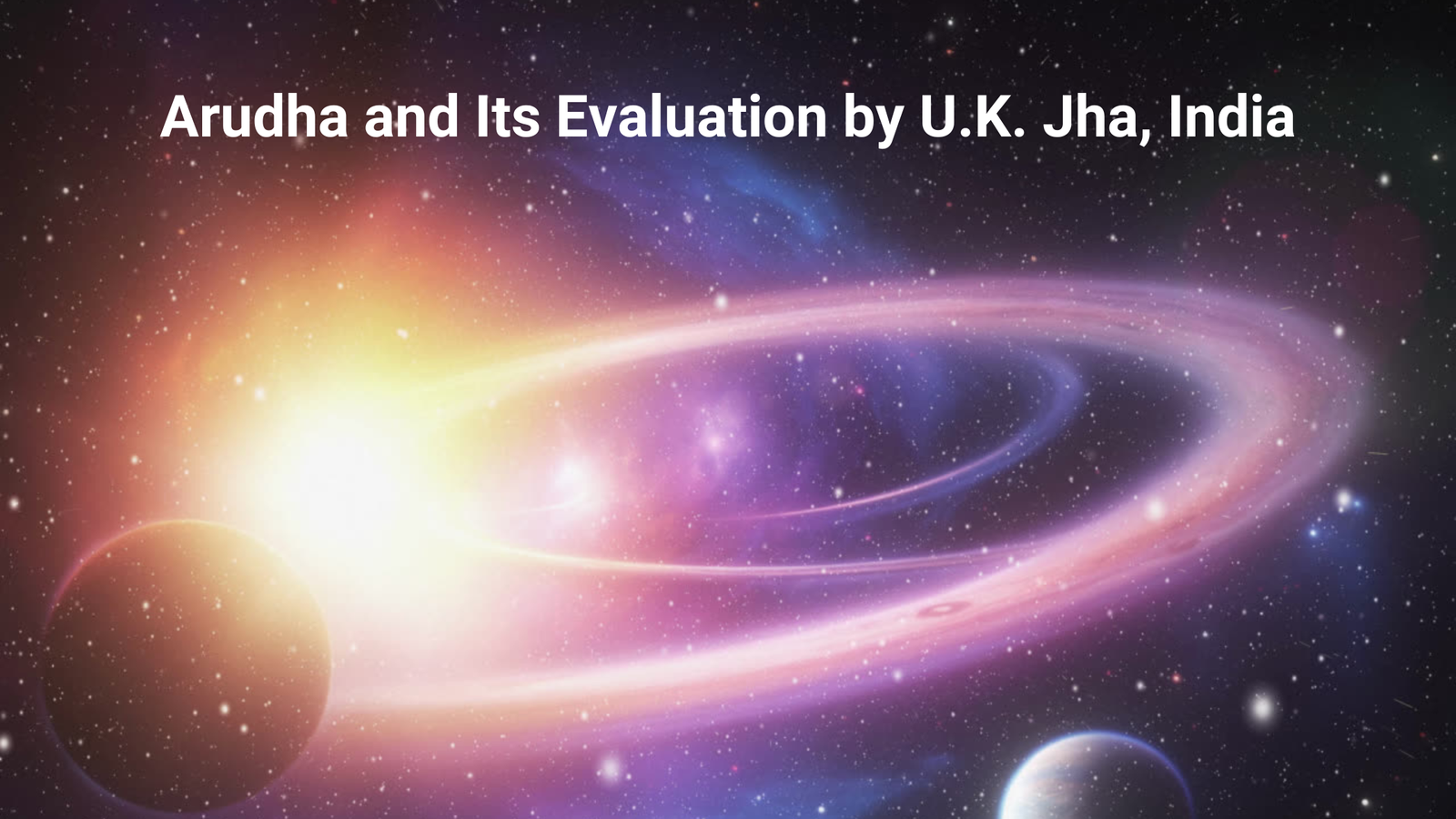
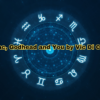

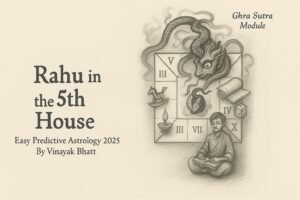
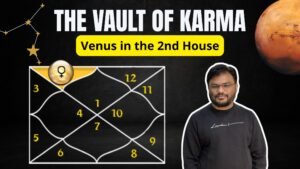
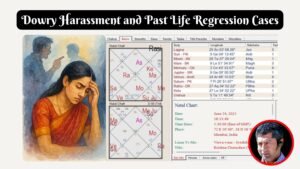
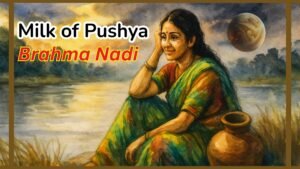

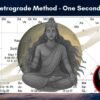
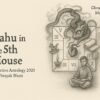

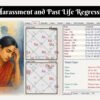
Leave a reply
You must be logged in to post a comment.